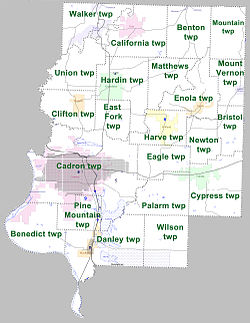Faulkner County, Arkansas | |
|---|---|
 Faulkner County Courthouse | |
 Location within the U.S. state of Arkansas | |
 Arkansas's location within the U.S. | |
| Coordinates: 35°09′36″N92°18′49″W / 35.16°N 92.3136°W | |
| Country | |
| State | |
| Founded | April 12, 1873 |
| Named after | Sandford C. Faulkner |
| Seat | Conway |
| Largest city | Conway |
| Area | |
• Total | 664 sq mi (1,720 km2) |
| • Land | 648 sq mi (1,680 km2) |
| • Water | 16 sq mi (41 km2) 2.4% |
| Population (2020) | |
• Total | 123,498 |
• Estimate (2024) | 131,611 |
| • Density | 191/sq mi (73.6/km2) |
| Time zone | UTC−6 (Central) |
| • Summer (DST) | UTC−5 (CDT) |
| Congressional district | 2nd |
| Website | www |
Faulkner County is a county located in the Central Arkansas region of the U.S. state of Arkansas. As of the 2020 census, the population was 123,498, making it the fifth most populous of Arkansas's 75 counties. [1] The county seat and largest city is Conway. [2] Faulkner County was created on April 12, 1873, one of nine counties formed during Reconstruction, and is named for Sandford C. Faulkner, better known as Sandy Faulkner, a popular figure in the state at the time.
Contents
- History
- Eponym
- Geography
- Major highways
- Transit
- Adjacent counties
- Demographics
- 2020 census
- 2000 census
- Government and politics
- Government
- Politics
- Education
- Public education
- Private education
- Communities
- Cities
- Towns
- Townships
- See also
- References
- External links
Located at the intersection of the Ozarks and Arkansas River Valley, the county was sparsely populated for much of its early years. Largely a county of rural settlements, growth came slowly following the Civil War and Reconstruction. The college known today as University of Central Arkansas was established in 1907, but population continued to grow slowly. The growth of Little Rock and the construction of Interstate 40 have made Conway and other parts of Faulkner County into bedroom communities for the state capital. Today Faulkner County is included in the Central Arkansas metro area, with Conway as a principal city.





